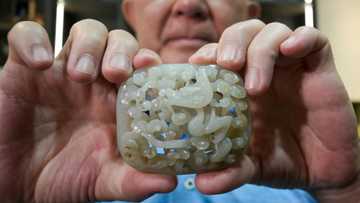Making dough: Unlikely Harlem bagel shop thinks big
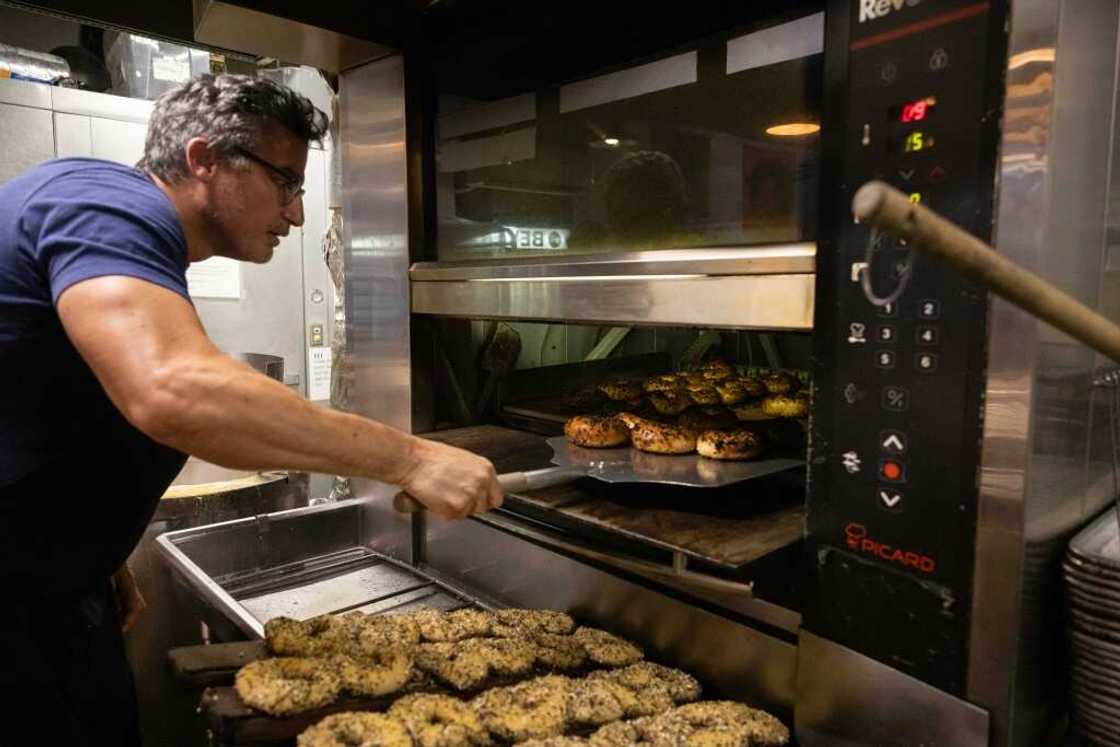
Source: AFP
Andrew Martinez was not born into a New York bagel empire and didn't start baking the Big Apple's quintessential ring of doughy goodness until he was in his 40s.
Yet the Queens-born Martinez, his wife Ashley Dikos and their growing business, Bo's Bagels, are regularly mentioned among the top producers of the ring-shaped bread products, a breakfast and lunch staple.
For Martinez, his ascent into the bagel elite is a happy accident.
"Sometimes I walk in here and say, 'I can't believe this is my life,'" Martinez told AFP. "This is New York. It's incredibly difficult to succeed here."
Martinez's unexpected road to the bagel big leagues began in 2014 when the longtime restaurant industry professional found himself stuck in the hospital for two months, nourished with a feeding tube.
Martinez decided the first thing he would do when healthy again was to eat a classically delectable New York bagel, with its crusty exterior and dense, chewy interior.
PAY ATTENTION: Join Legit.ng Telegram channel! Never miss important updates!
But upon returning to his Harlem home, he realized there were no decent bagel shops within walking distance.
Annoyed at needing to take the subway to get his fix, Martinez began researching the bread. Bagels, he learned, originally arrived in New York's Jewish neighborhoods on the Lower East Side thanks to Polish immigrants.
Reading whatever he could find about the boil-and-bake process and picking the brains of experts, Martinez experimented for about six months before producing something resembling the bagels of his youth.
"People eat with their memories," he said. "I was dreaming about the bagels I ate when I was a kid in Queens, and that's the flavor I was looking for."
Thinking bigger
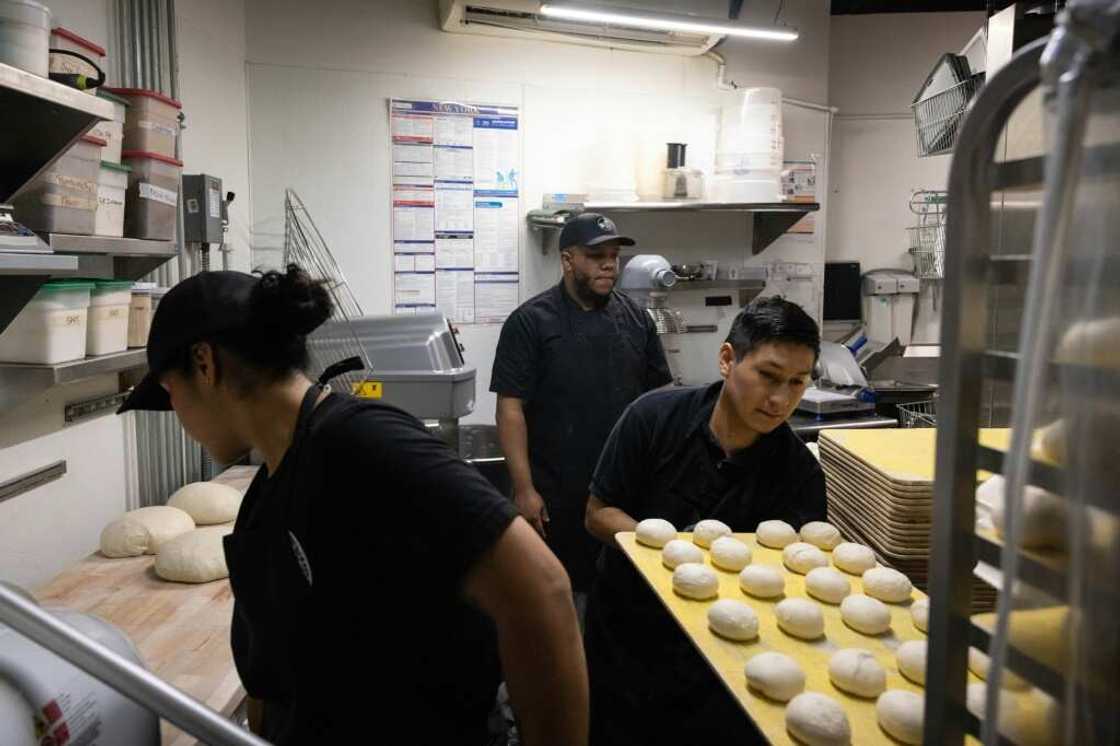
Source: AFP
His culinary quest began to expand, however, when Martinez served the bagels to family members who urged him and Dikos to think bigger.
Small-scale catering morphed first into a farmers market stall; then in 2017 the couple opened Bo's Bagels -- a 1,200-square-foot (110-square-meter) retail space on a corner of 116th Street in West Harlem near several African restaurants.
Consumers have lined up at the door from the start, but the couple admits the journey has included some comical missteps.
Before their first farmers market weekend, Martinez and Dikos converted their kitchen into a production factory, putting hundreds of unbaked bagels in the refrigerator the night before.
But after a two-hour nap, they awoke to find a growing, yeast-fueled ball had popped the fridge door open.
"It was just one giant blob of dough," recalled Dikos.
The couple were forced to postpone their market debut, instead working well into the night to cut the ruined dough into pieces small enough to fit in the trash chute without raising the suspicions of apartment staff.
Labor of love
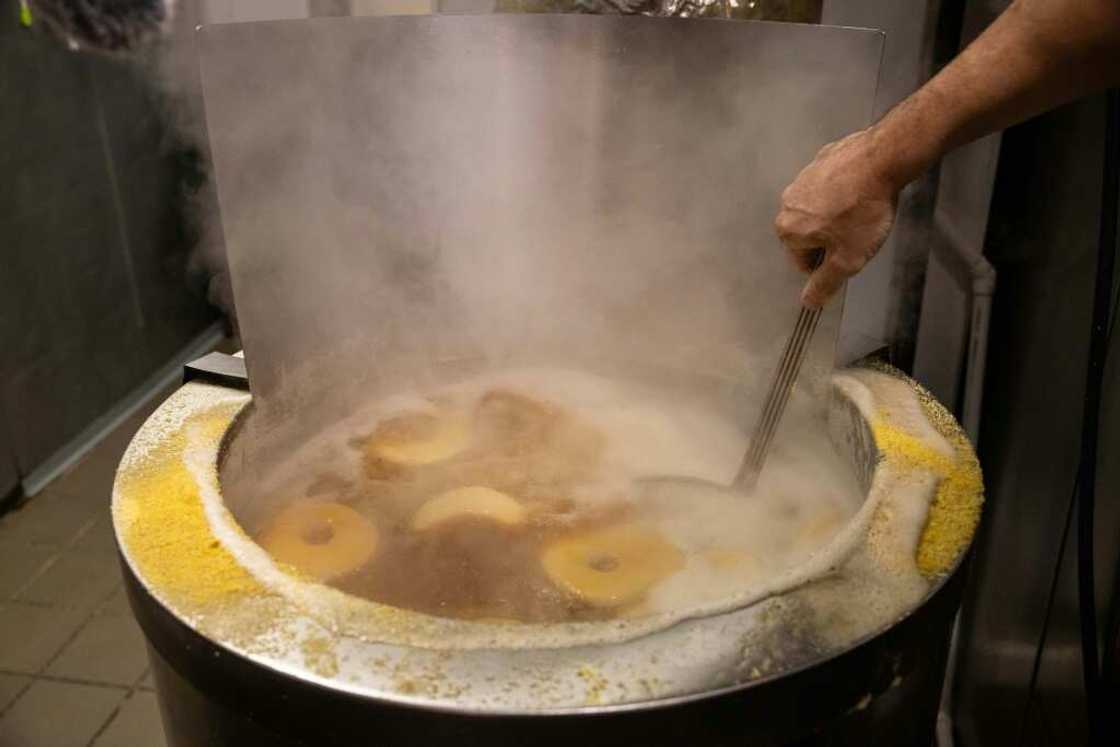
Source: AFP
Creating great bagels begins about 48 hours before baking, when flour, yeast and water are combined and set out overnight.
Other key steps include an overnight refrigeration to slow the fermentation process and a 10- to 12-minute boil.
Not all New York bagelmakers go through this painstaking process -- and it shows, industry experts say.
"There are a lot of mediocre bagels," said Sam Silverman, chief executive of the trade group BagelUp.
Silverman nonetheless considers this a golden era for bagels, with legacy names such as Ess-a-Bagel and Utopia Bagels jostling with newcomers, like Bo's, who fill a surprising number of "bagel deserts" across the city's five boroughs.
No green bagels
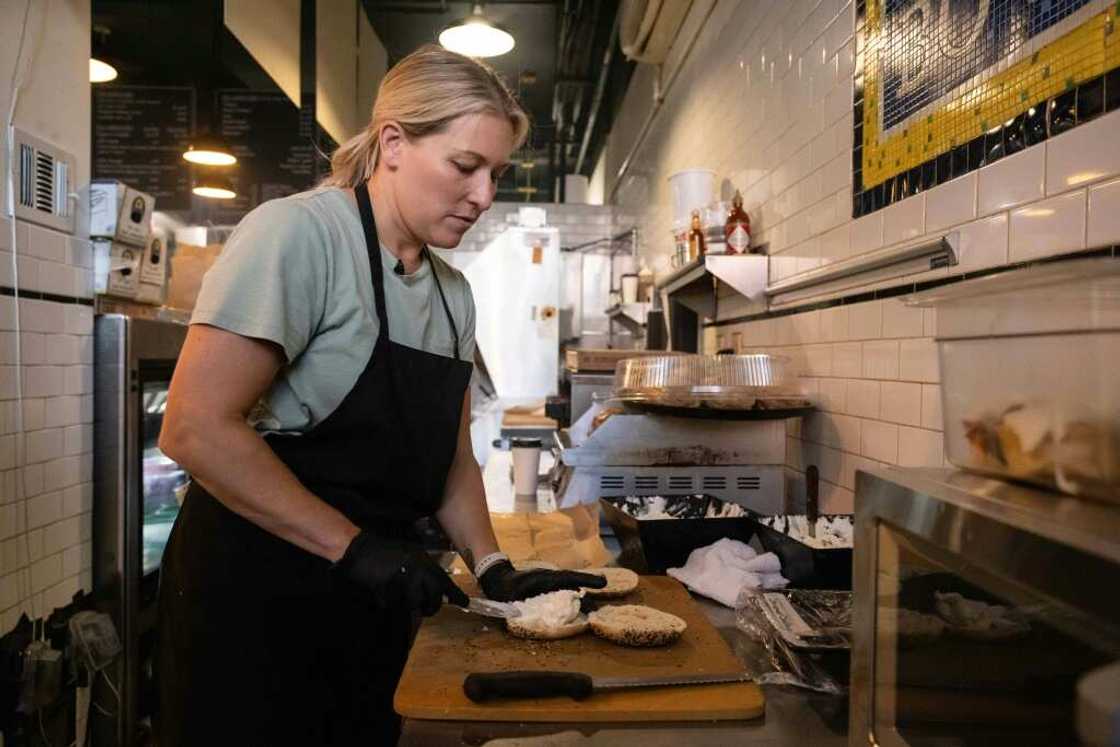
Source: AFP
Bo's, which has won raves from the Food & Wine and Eater websites, credits its success to a scrupulousness in following time-tested processes, an avoidance of cheap ingredients and a throwback approach to a crustier, smaller bagel.
The Harlem store produces about 3,000 bagels a day, an output that will be at least doubled when Bo's opens a second shop later this year in Washington Heights, another neighborhood with few bagel options.
The couple eventually plans to open shops outside New York.
While Martinez was the driving force behind the original recipe, the Michigan-born Dikos has taken the lead on some options including the cinnamon raisin variety.
Pleasing traditionalists is central, but the couple has also embraced some newer flavors such as the blueberry and three-cheese bagels that were first made popular outside New York.
"Nowadays you have to provide a lot of variety for all the different kinds of people," said Dikos.
The couple are not opposed to gluten-free bagels, though they have yet to develop a recipe that measures up, she said.
But they shun "gimmicks" -- so there will be no green bagels on St. Patrick's Day.
Source: AFP


